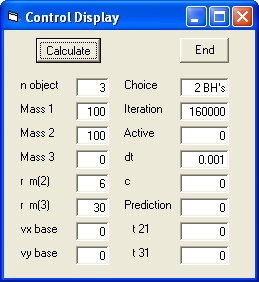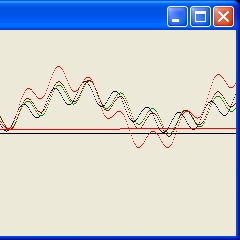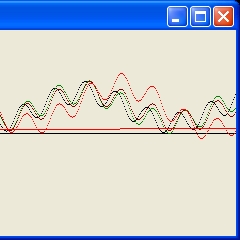In order to test the program:
- Set the parameter Choice to "Mercury". This initialises all the parameters.
- Select "Calculate" and wait until the simulation is finished.
- Set parameter c Speed of gravitional field to 50000 and Select "Calculate"
- Set parameter vx to 1 and Select "Calculate"
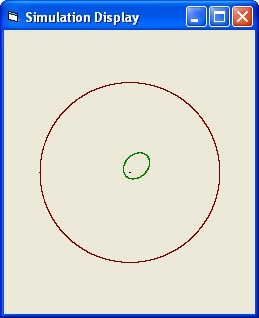
Simulation Display
The simulation Display shows.
- One Black dot which is the Sun.
- A green trajectory, which is the planet Mercury.
- a brown circle, which is Jupiter
|
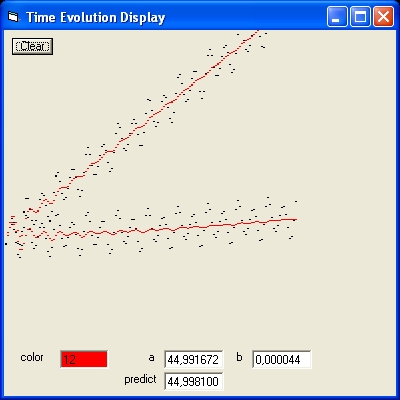
Time Evolution Display
The Time Evolution Display shows three simulations.
- The top part shows the two cases with vx = 0. This is the sloping "line"
- The bottom part shows the case with vx = 1. This is the horizontal "line"
The black dots represent what is observed i.e. the angle when Mercury reaches its maximum value after each revolution.
The red dots represent a running average value of the angle.
The function calculated is f(t) = a + b*t.
The parameter a is the initial angle.
The parameter b is the forward angle per time unit.
|
